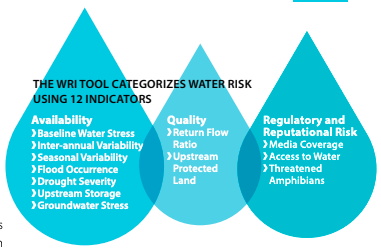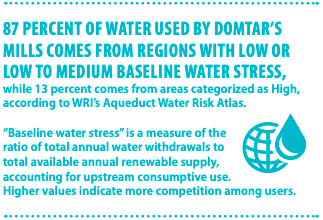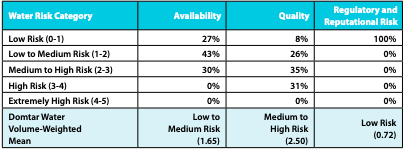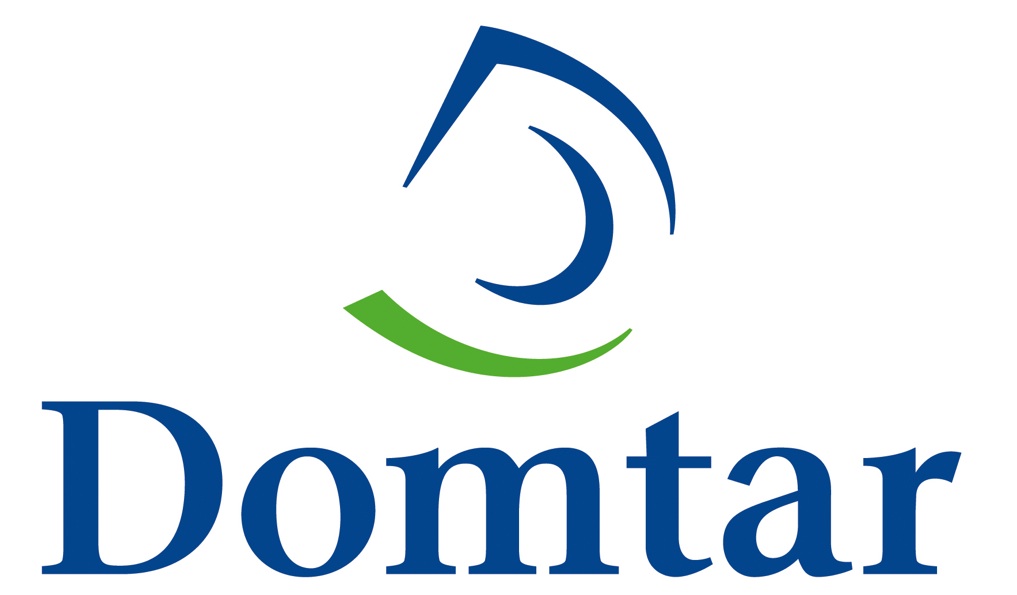The Risk of Oversimplifying Water
Understanding risks to our water supplies helps us better focus efforts and resources where they will do the most good. Often when people think about water risk, the first thing that comes to mind is water quantity or availability, but this is just one component. Water quality, regulatory and reputational risks also need to be considered.
Each of our facilities operates in a watershed with particular geographies, land uses, regulatory, environmental and socioeconomic characteristics that influence the quantity, quality and timing of water available for use in our manufacturing operations.
While we have operated some of our mills for more than 150 years with minimal disruptions due to the availability and quality of water, we recognize we cannot rely on past practices alone to manage water going forward. With growing populations and additional competition for shared resources, we do not take water for granted.
The World Resources Institute (WRI) has developed a global, online resource, Aqueduct Water Risk Atlas, to help companies better understand water risk by providing a high-level screening of potential risks in watersheds where they operate. Domtar has used WRI’s tool to validate what we already know about water risks in our local watersheds and to disclose them in a more standard way for our stakeholders.
Although not perfect, the WRI tool does recognize that water issues are inherently complex. That is why it includes 12 indicators for evaluating water risk. It is concerning that some Environmental, Social and Governance (ESG) rating agencies limit their evaluation of water risk to a single metric (e.g., Baseline Water Stress), potentially missing a large part of a company’s risk profile
While we can appreciate ESG rating agencies wanting to compare water risk between companies, and integrating these risks into their algorithms, water risk – unlike greenhouse gas emissions – is a highly localized concern. Rolling up and averaging water risks from a screening-level tool can mask real risks at individual facilities, which is why it is important to also consider milllevel assessments of water risk. Screening tools offer a useful framework, but they alone do not adequately capture what is happening at the facility level.
Given that water risk reporting is still emerging, Domtar appreciates initiatives and dialogues that help companies provide more meaningful water risk disclosure.




